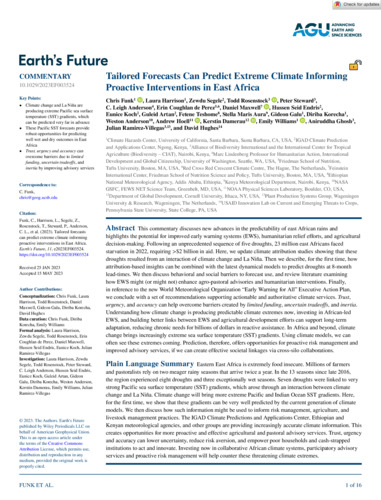Tailored forecasts can predict extreme climate informing proactive interventions in East Africa
Abstract This commentary discusses new advances in the predictability of east African rains and highlights the potential for improved early warning systems (EWS), humanitarian relief efforts, and agricultural decision‐making. Following an unprecedented sequence of five droughts, 23 million east Africans faced starvation in 2022, requiring >$2 billion in aid. Here, we update climate attribution studies showing that these droughts resulted from an interaction of climate change and La Niña. Then we describe, for the first time, how attribution‐based insights can be combined with the latest dynamical models to predict droughts at 8‐month lead‐times. We then discuss behavioral and social barriers to forecast use, and review literature examining how EWS might (or might not) enhance agro‐pastoral advisories and humanitarian interventions. Finally, in reference to the new World Meteorological Organization “Early Warning for All” Executive Action Plan, we conclude with a set of recommendations supporting actionable and authoritative climate services. Trust , urgency , and accuracy can help overcome barriers created by limited funding , uncertain tradeoffs , and inertia . Understanding how climate change is producing predictable climate extremes now, investing in African‐led EWS, and building better links between EWS and agricultural development efforts can support long‐term adaptation, reducing chronic needs for billions of dollars in reactive assistance. In Africa and beyond, climate change brings increasingly extreme sea surface temperature (SST) gradients. Using climate models, we can often see these extremes coming. Prediction, therefore, offers opportunities for proactive risk management and improved advisory services, if we can create effective societal linkages via cross‐silo collaborations.

